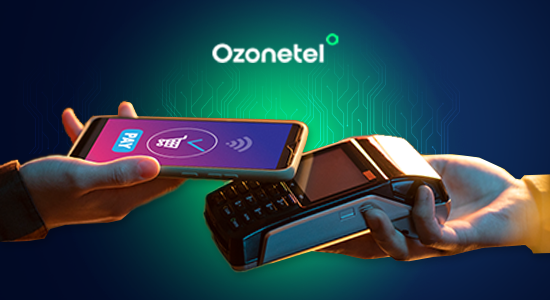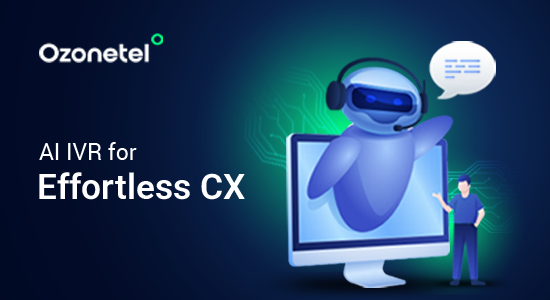- Resources
- Agent Analytics: Ways To Improve Agent Performance
Agent Analytics: Ways To Improve Agent Performance

Agent analytics provides a clear picture of your team’s performance using measurable data. For service teams, metrics like Average Handle Time (AHT), First Contact Resolution (FCR), and Customer Satisfaction Score (CSAT) reveal how effectively agents address customer needs. For sales teams, key indicators like conversion rates, and revenue per agent show how successfully they’re closing deals and generating revenue.
With the right agent analytics tools , you can track real-time interactions across both sales and service teams, identify areas for improvement, and coach your agents for better outcomes.
This guide covers everything you need to know about agent analytics and how to use it to improve both your service quality and sales effectiveness.
[SG1]agent analytics tools
What is Employee Experience?
Employee Experience (EX) is the overall perception employees have of their journey within an organization. It encompasses every interaction and touchpoint, from recruitment and onboarding to daily responsibilities, support systems, and eventual offboarding.
What is Agent Analytics?
Agent analytics involves measuring and analyzing the performance of contact center agents, providing insights into how effectively they handle customer issues, close sales, and maintain high service quality.
It combines metrics from voice, chat, email, and social channels to create a complete picture of how agents handle customer needs. Key performance indicators include operational metrics (like handle time and resolution rates), sales metrics (such as conversion rates and revenue generated), and quality metrics (including customer satisfaction and interaction accuracy).
Tools used in agent analytics can range from manual processes to AI-powered dashboards, allowing you to measure efficiency, identify areas for improvement, and optimize workflows for better outcomes.
Importance of Agent Analytics
Agent analytics empowers businesses to have a 360-degree view of agent performance and identify the gaps in their existing workflow. With features like QA automation, real-time monitoring, conversation analytics , they can gauze sentiments, analyze interaction patterns, and track performance metrics. This, in turn, can help them fine-tune agent performance and streamline workflow in order to drive maximum agent as well as customer satisfaction.
By analyzing this data, you can:
- Tailor training programs to address specific skill gaps.
- Recognize and reward top-performing agents.
- Optimize workflows to improve efficiency.
- Gain insights into customer behavior and preferences for better service delivery.
[SG1]can we also include conversational intelligence here and link to https://ozonetel.com/what-is-conversational-intelligence/
Key Metrics in Agent Analytics Performance
Agent analytics helps you assess your customer support team’s efficiency, productivity, and effectiveness. You can identify trends, enhance training, and provide better customer experiences by tracking performance data. Below are the key metrics you should focus on for a comprehensive evaluation.
1. Customer Satisfaction Score (CSAT)
CSAT measures how satisfied your customers are after a purchase or interaction. You can collect it through surveys where customers rate their experience on a scale such as 1 to 10. High scores reflect strong service quality, while low scores highlight areas to improve.
To calculate CSAT, divide the number of positive responses by the total number of responses and multiply by 100.
2. Customer Dissatisfaction Score (DSAT)
DSAT, the opposite of CSAT, measures customer dissatisfaction. It offers specific insights into problem areas. For example, if many customers report dissatisfaction with resolving password resets, you can review and improve that process.
To calculate DSAT, divide the number of negative responses by the total number of responses and multiply by 100.
- Customer Effort Score (CES)
CES measures the effort customers need to resolve an issue or complete a task. Surveys often use scales (e.g., 0–10) or agree/disagree statements to capture feedback.
Lower CES scores indicate that your processes are easy for customers to navigate, reducing frustration
4. Net Promoter Score (NPS)
NPS gauges customer loyalty by asking how likely customers are to recommend your business. Responses are usually collected on a scale of 1 to 10, with higher scores reflecting stronger customer trust and satisfaction.
5. Internal Quality Score (IQS)
IQS evaluates customer service interactions internally. Reviews conducted by peers or managers assess factors like tone, empathy, and adherence to internal processes.
IQS helps you monitor whether your team’s actions align with company standards and customer expectations.
6. First Reply Time (FRT)
FRT tracks how quickly agents respond to customer requests. Fast responses show an efficient workflow, while delays may signal training or process issues.
To calculate FRT, divide the total time to send the first replies by the number of resolved tickets.
7. First Contact Resolution (FCR)
FCR tracks the percentage of tickets resolved in a single interaction. High FCR rates indicate that your team resolves issues effectively without requiring follow-ups.
To calculate FCR, divide the total number of one-touch tickets by the total number of tickets received.
8. Average Handle Time (AHT)
AHT measures the average duration of customer interactions, including talk, hold, and follow-up times.
To calculate AHT, add the total talk, hold, and follow-up times, then divide by the total number of interactions.
9. Average Wait Time (AWT)
AWT measures how long customers wait on hold before speaking to an agent. Shorter wait times lead to better customer satisfaction.
To calculate AWT, divide the total wait time by the number of calls handled.
10. Tickets Handled Per Hour
This metric measures how many tickets an agent resolves within an hour. It helps you gauge productivity and adjust workloads effectively.
Monitoring these metrics can enhance your team’s performance, improve customer satisfaction, and make informed decisions to refine your support processes.
Tools Required to Measure Agent Performance
Apart from tracking agent performance metrics, you need reliable tools that provide actionable insights and simplify performance management. Below are key tools that can help you:
Agent Performance Dashboards
Agent performance dashboards give you a clear view of your team’s metrics, such as Average Handle Time (AHT), First Contact Resolution (FCR), and Customer Satisfaction Score (CSAT). These dashboards compile data from various sources into one interface, making it easier to analyze performance trends.
You can identify which strategies work well and which areas require improvement. For example, consistent monitoring of AHT can reveal whether agents spend too much time on calls, highlighting a need for training on specific processes.
Automated Quality Management Tools
Automated quality management tools simplify the process of reviewing agent interactions. Unlike traditional methods, which might assess only a fraction of calls, automated systems analyze 100% of interactions.
Tools like Ozonetel’s automated quality audit feature generate unbiased performance reports, automatically score interactions, and pinpoint improvement areas. These insights allow you to provide targeted coaching, helping agents improve their approach in specific scenarios.
AI-Based Conversation Analysis
AI-powered conversation analysis uses Natural Language Processing (NLP) to transcribe and analyze calls in real time. This technology identifies rule violations, effective practices, and areas for improvement.
For example, the system can flag during a call if an agent fails to verify customer details (a compliance issue) or successfully de-escalates a frustrated customer. Based on this analysis, you can deliver personalized feedback that helps agents refine their performance immediately.
Real-Time Feedback Systems
Real-time feedback systems provide instant insights to agents while they’re on calls. These tools can suggest responses, highlight missed steps, or indicate whether an agent meets key performance standards during live interactions.
For instance, if an agent forgets to greet the customer properly, the system can prompt them to correct this during the conversation. This approach helps agents adjust their behavior on the spot, leading to better call outcomes.
Coaching and Training Platforms
Dedicated platforms for coaching and training use data from performance dashboards and quality management tools to create tailored training plans. These platforms can track each agent’s progress and highlight specific skills they need to develop.
For example, an agent struggling with long AHT can access training modules focused on effective issue resolution. This targeted training approach saves time and helps agents address performance gaps.
[SG1]Can we put screenshot of dashbaord
Benefits of Agent Performance Analytics
Agent performance analytics gives you actionable insights into agent behavior, customer interactions, and operational patterns. These insights allow you to make informed decisions, improve training programs, and optimize workflows. Here are some of these key benefits discussed in a little more detail:
Improved Agent Performance
Agent analytics provides you with detailed data on how agents handle various interactions across different channels, such as phone calls, emails, or chats. By examining this data, you can identify specific strengths and areas for improvement.
For instance, if an agent has a high call handle time or low-resolution rate, targeted coaching can be implemented to improve their efficiency. Performance metrics such as average call duration, number of resolved issues, and quality of customer interactions can guide personalized development plans, resulting in a more skilled and adaptable workforce.
Better Customer Experience
Performance analytics can track metrics like first-call resolution (how often an issue is resolved in the first interaction) and customer satisfaction scores, helping you understand how effectively agents address customer concerns.
This information enables you to tailor training programs to specific needs and refine response scripts to provide quicker resolutions and more personalized service. The result is higher customer satisfaction and increased loyalty and trust in your service.
Efficient Resource Allocation
Agent analytics helps you optimize how you allocate resources by identifying trends in workload distribution and pinpointing operational bottlenecks. This information is crucial for reducing unnecessary costs and streamlining operations.
For example, by analyzing peak times of customer activity, you can ensure enough agents are available to handle increased volume, reducing wait times and improving customer satisfaction. This data-driven scheduling and resource management approach helps minimize idle time and maximizes productivity.
Recognition of Top Performers
With detailed performance data, you can easily identify and recognize top-performing agents. Metrics such as customer feedback scores, resolution times, and sales conversion rates clearly show who is excelling.
Regular recognition boosts morale and motivates other team members to improve their performance. Structured recognition programs based on solid data ensure fair and objective rewards, contributing to a more engaged and motivated workforce.
Real-Time Performance Monitoring
Real-time analytics allow you to monitor ongoing interactions and assess agent productivity as they occur. This enables you to make immediate adjustments, such as reassigning tasks or providing on-the-spot coaching if issues arise.
For example, if an agent struggles during a call, a supervisor can offer guidance or assistance in real time. This level of immediate oversight helps you quickly address problems, reduce mistakes, and improve overall service quality, enhancing agent performance and customer satisfaction.
Predictive Insights for Strategic Decisions
Agent analytics helps you understand current performance and provides predictive insights that inform future strategies. By identifying trends and patterns, you can forecast periods of high customer demand, allowing you to prepare your team and resources in advance.
Additionally, predictive analytics can indicate areas where new training or technology may be needed to stay ahead of customer expectations. This proactive approach ensures you’re always one step ahead, leading to long-term efficiency and sustained service quality.
Reduced Oversight Needs
As agents improve through targeted training and implementing best practices based on analytics, you reduce the need for constant supervision. Analytics tools allow you to monitor performance remotely and indirectly, freeing management time for strategic planning and higher-level tasks.
By continuously refining workflows and agent skills, you create a more self-sufficient team that requires less day-to-day management. This reduction in oversight allows for a more focused and efficient use of managerial resources, contributing to overall organizational productivity.
[SG1]Include customer experience here and link to https://ozonetel.com/customer-experience-guide/
How Ozonetel Can Help Improve Agent Experience
Ozonetel’s AI-powered solutions redefine agent performance evaluation by automating key monitoring, analysis, and reporting aspects. The platform’s speech analytics tool delivers in-depth conversational insights, enabling managers to identify training needs and optimize team performance. By tracking metrics like call quality scores and customer satisfaction across thousands of calls in minutes, Ozonetel eliminates the manual errors and biases of traditional audits.
Key features enhancing agent experience include:
- Real-time Monitoring: Supervisors can view agent performance, barge into calls, and provide immediate support.
- Automated Reporting: Customized scorecards and actionable insights streamline evaluations, saving managers up to 30 hours per month.
- Targeted Training: AI identifies specific gaps, allowing tailored coaching that improves agent efficiency and customer interactions.
- Comprehensive Call Analysis: Sort calls by sentiment, intent, or agent performance to identify top and underperformers for strategic action.
For example, The National Health Authority (NHA) utilized Ozonetel to monitor 122k+ hours of conversations for 900 healthcare advisors. The solution enhanced first-contact resolution, boosted citizen satisfaction, and saved time for supervisors.
Want to see what Ozonetel can do for your company? Sign up today for a free 7-day trial.
Prashanth Kancherla
Chief Operating Officer, Ozonetel Communications
Over the past decade, Prashanth has worked with 3000+ customer experience and contact center leaders...
Chief Operating Officer, Ozonetel Communications
Over the past decade, Prashanth has worked with 3000+ customer experience and contact center leaders to comprehensively understand the need for effective and efficient customer communications at every step of their journey with a brand. Deeply embedded in today’s CCaaS ecosystem, he has been instrumental in Ozonetel's growth and contributed in various roles including product management, sales, and solution architecture.
Frequently Asked Questions
Call center productivity refers to how efficiently your agents handle customer inquiries, resolve issues, and manage interactions while balancing operational costs and maintaining high customer satisfaction. High productivity means your team is achieving more with fewer resources without compromising quality.
You can measure call center productivity by tracking key metrics and analyzing them regularly. Some common KPIs include:
- Calls Handled Per Agent: The number of calls successfully managed by each agent.
- Abandonment Rate: The percentage of calls where customers hang up before reaching an agent.
- CSAT Scores: Customer satisfaction ratings collected through post-call surveys.
- Net Promoter Score (NPS): Measures the likelihood of customers recommending your services.
- Call Quality: Evaluates how well agents communicate, resolve issues, and follow protocols.







